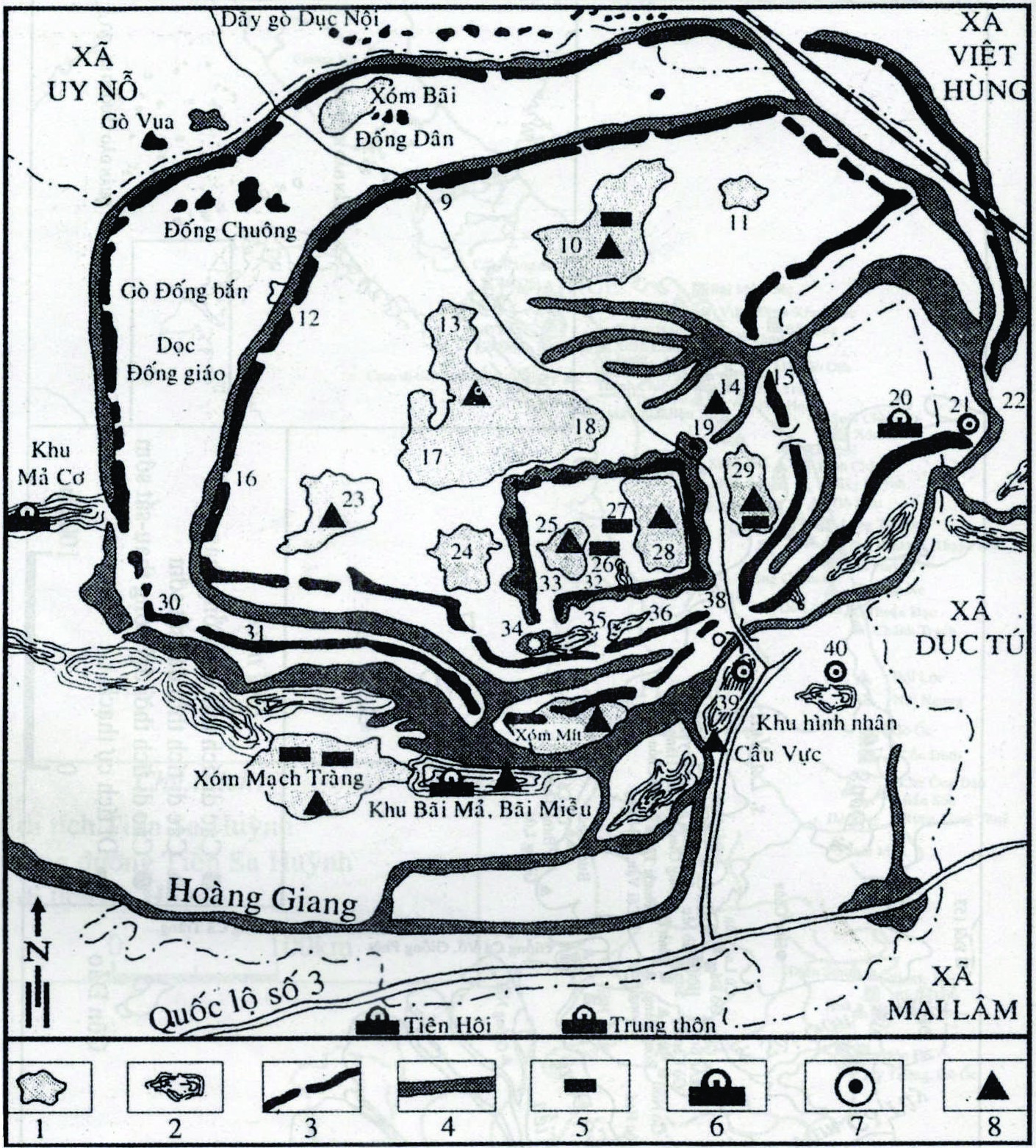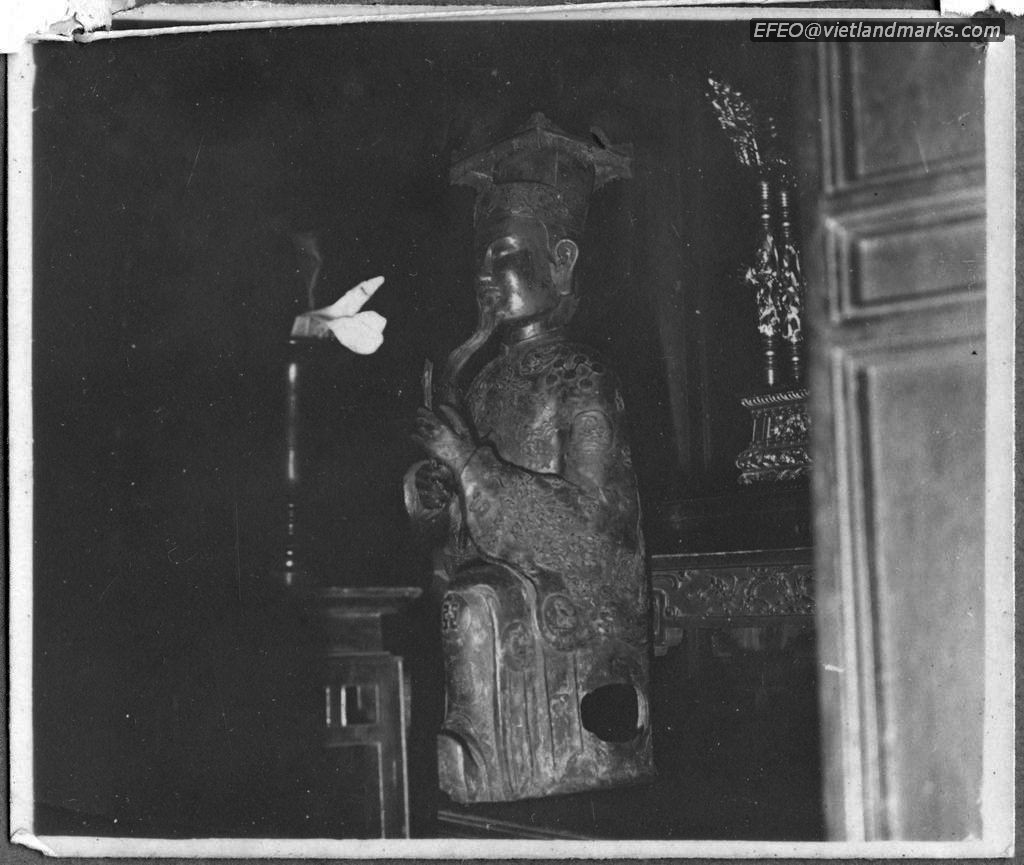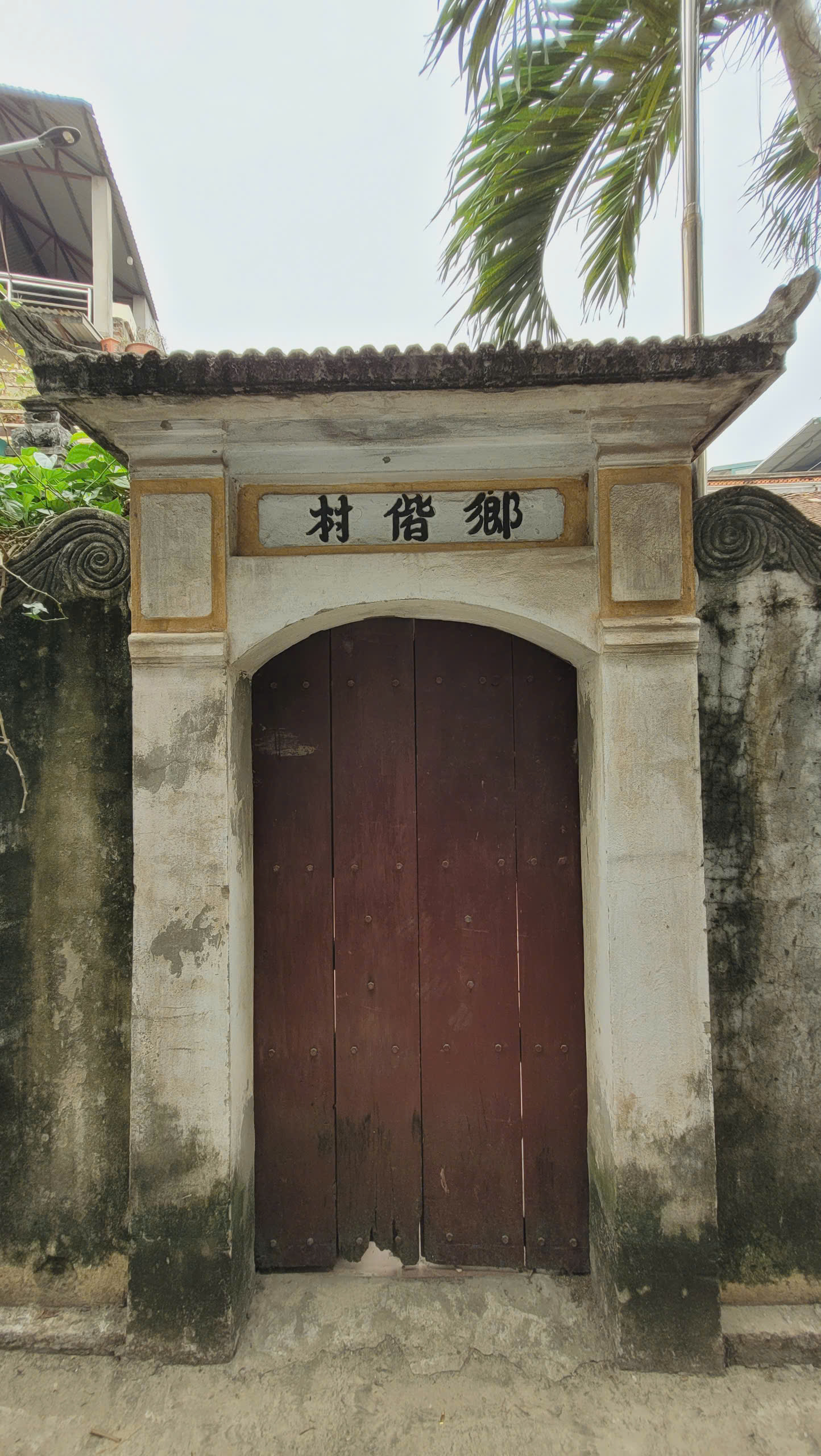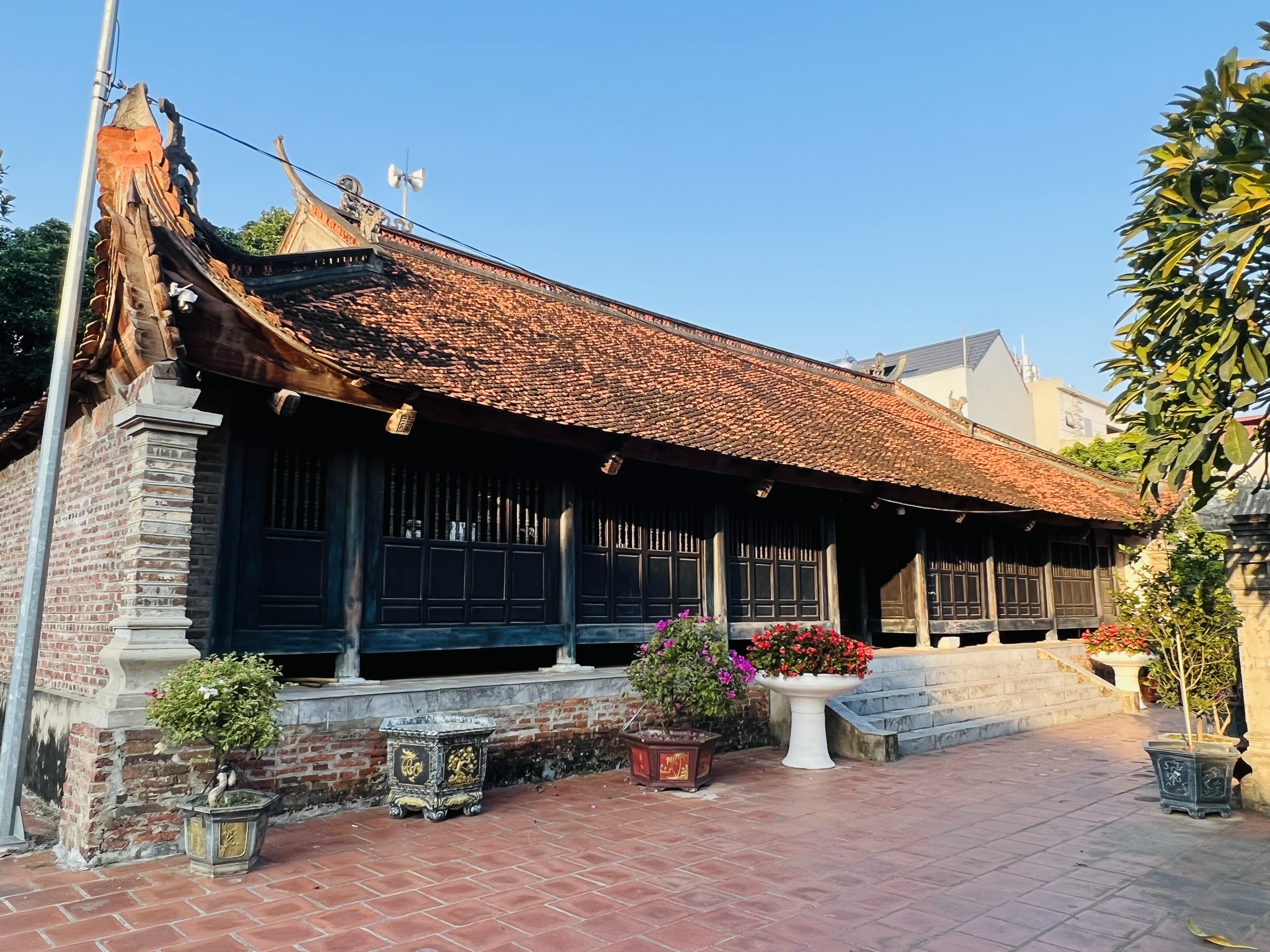From Cho Sa through Cho village to Thuong temple is to reach Chua village. The entire Chua village is currently located within the inner citadel, bordering the following villages:
- Bordering Dong village to the north.
- Bordering Mit village to the south.
- Bordering Cho village to the east.
- Bordering Lan Tri village to the west.
Chua village has the Chinese name Hau Mieu village, located on a high terrain, according to legend, the land is shaped like a turtle, with the turtle's head in the eastern area (the current cultural house area), one side of the turtle's foot is the exhibition house; Thuong temple, Ngu Trieu Di Quy communal house, Ba Chua hermitage, Chua village temple located on the turtle's back...
Chua village is one of the oldest hamlets of Co Loa commune. In the past, there were two gates leading to the village: the main gate in the South (where the temple gate is now), which is said to have been built during the Ngo Quyen period. Previously, there was a brick gate but it was destroyed during the land reform period, and the Am Thong gate in the North of the village, which was the gate for people to go to the fields for agricultural production.
In the past, Co Loa commune was initially divided into 3 hamlets: Dong Nhat, Dong Nhi, Dong Tam, and later a fourth hamlet, Doai Tu, was established. In which Chua village belonged to 3 different hamlets (it is not clear which hamlet, only that part of Chua village and part of Cho village belonged to Dong Nhat hamlet).
The division of the hamlets in Chua village was carried out according to bamboo hedges, that is, by area. Each hamlet had its own fields in addition to the village's public fields. Those who joined the hamlets all received the same amount of fields, but the amount of fields of each hamlet and the amount of fields of members of different hamlets were not the same. The amount of land of a hamlet was more or less provided by the village, plus the amount of fields sent back by members to the hamlet. Doai Tu was the smallest hamlet, with the least population, so the land ration of each member was the largest. The public fields of Chua village in the past stretched from Ba Dam bridge to the area of Mit village today (west, southwest outside the outer wall, north of Mach Trang village).
At the head of each hamlet is a hamlet chief, whose rights depend on the wealth of the hamlet, that is, on the amount of land in that hamlet. The hamlet chief does not necessarily have to be an elderly person, but he must be a prestigious person, able to manage the work of the hamlet, and elected by the members of the hamlet. Each hamlet has its own hamlet post, used as a meeting place, to resolve the common work of the hamlet. The hamlet grows stronger with the growth of the village.
According to the old regulations of the Giap, only 18 years old can enter the Giap and to enter the Giap, one must bring offerings to the village office to present to the Giap leaders and the elders in the village, then be called the head of the group. The head of the group will be allowed to go to the communal house, have the duty of spreading mats, boiling water to invite the elders, called the family people. Then, one will be promoted from the first table to the fifth table, 50 years old can become the boss, 60 years old can become the elder (when the village has an event, one can go to Cau Lao to sit), 70 years old can become the elder and 85 years old can become the elder, all must bring offerings to the office to be recognized by the mandarins, the Giap leaders, and the elders in the village. Offerings include areca nuts, tea, sticky rice with chicken, medicine, wine... However, some people are only 3 - 4 years old but their parents buy Giap for them, if the Giap needs money, they will sell the young Giap to anyone who wants to buy.
According to the state regulations, people at the age of 18 must join the army. If they do not want to join, they must pay money to the village. Therefore, the people who become soldiers are mainly poor people who do not have money to pay money to the village. Only men are allowed to join the village, women are not allowed. Men who have committed even the smallest crime are not allowed to join the village. There is competition among the villages to hold important positions in the village. Every time they receive a position, they must bring gifts to the village's ancestor's ceremony.
The activities of the ward in Chua village are mainly to hold funerals for members of the ward, collect taxes from ward members, and be responsible to the village for the ward's taxes. Organizing festivals is also divided into responsibilities according to ward units: the ward must prepare sacrificial offerings, send people to carry the holy palanquin... During Tet, the ward performs a ceremony to thank the local mandarin at the post office, certifying those who have become elders, chiefs, and ward leaders... Families without sons who want to place a queen can, in addition to placing a queen at the communal house or post office, the clan can also place a queen at the ward.
In addition to the border organization, Chua village was also divided into alleys, including 3 alleys: Ngo Trong, Ngo Ngoa and Ngo Giua. Ngo Ngoa and Ngo Trong run around a part of the hamlet in a circle and meet, and Ngo Giua was added. Each alley like that used to have its own shrine. Now, only Ngo Trong temple remains, also known as Hang Ngo temple, Cua Ban temple. Ngo Trong temple was used to worship the wandering souls in the village. Over time, many people came to worship and spread the word about the sacredness of the temple.
Ancient Co Loa village often made friends with the villages: Dong Tru, Dong Tuu, Hoi Phu, Rung Manh, Tam Trao (Ha Bac). In addition to making friends with other villages, the villages in Co Loa commune also made friends with each other. In which, Chua village was considered the eldest brother and made friends with Lan Tri village (considered the second brother), Nhoi, Huong, Vang, Mit.
The main clans in the village include Nguyen (including Nguyen Kha and Nguyen Van), Lai, Do, Chu, Hoang, Truong... of which the largest is Nguyen (accounting for about 2/3 of the village's population).
Chua village is located entirely inside the inner citadel to the west, occupying half of the total area, separated from Cho village by the village road on the left side of Ngu Trieu Di Quy communal house. Chua village area is located on the most ancient land, the central land of Co Loa commune associated with An Duong Vuong and the capital of Au Lac country. Therefore, in the village there are many religious architectural works related to the legend of the ancient capital such as: Ngu Trieu Di Quy communal house, Co Loa pagoda, Ba Chua hermitage, Thuong temple...
MANAGEMENT DEPARTMENT OF CỔ LOA VESTIGE SITE








